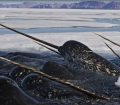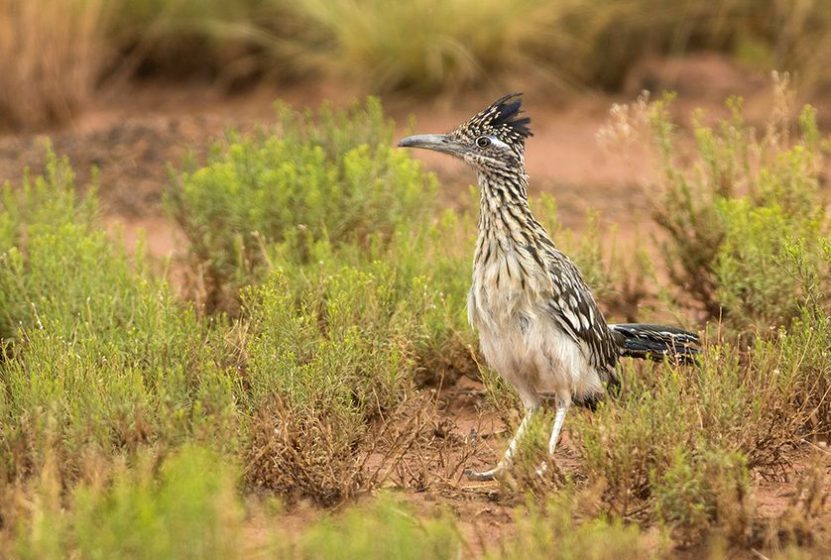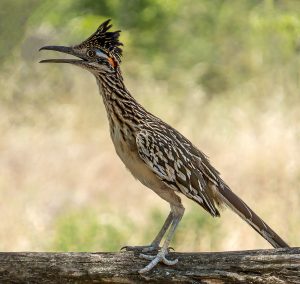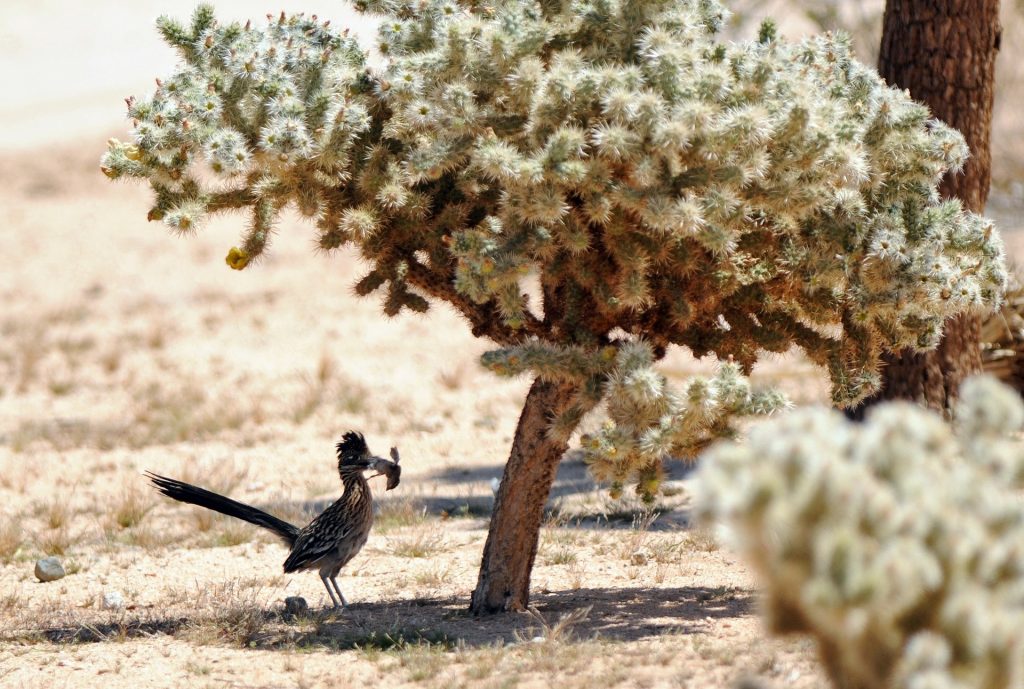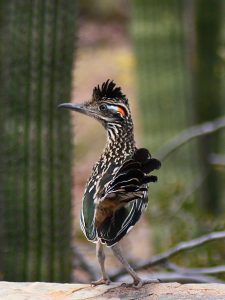The Greater Roadrunner (Geococcyx californianus) is a California native and the largest of two species of Roadrunner that lives in the American South West and south into Baja California and Mainland Mexico. Their latin name means California Earth-cuckoo as they are part of the cuckoo family. They are also known colloquially as the Chaparral Cock, Ground Cuckoo and Snake Killer (Snake Killer!!)
The Roadrunner is usually two feet long from its sturdy beak to its tail feathers. Their feathers are mostly mottled brown to blend into the landscape along with a dark jaunty crest and often have red and a blue behind each eye.
They can run up to 20 mile per hour which gives them a huge advantage when hunting or running from danger. When spooked they are capable of flight over short distances and when possible increase the glide by heading downhill, but that’s about it due to their stubby wings, hence their terrific ground game. Their feet are somewhat unusual in that they have two ties pointing forward and two back which gives their tracks the appearances of an X. This makes it hard to follow their trail and Native Americans thought them to be quite crafty and good luck for which they called them Medicine Birds and used the X pattern in art and decoration.
Living in largely desert areas with little but scrub for cover, the Roadrunner is well adapted to the extreme weather of their environment. Similar to the reptiles of the desert, during the coldest nights the birds will go into a state of torpor with a lower body temperature and metabolic rate. When morning comes they will expose a darkened area on their back to warm up again. When the day is hottest the Roadrunner will tend to take a siesta of sorts by seeking shelter in a shady bush and limit its activity. The birds can also shed heat by fanning an area of featherless skin under their chin. Finally, Roadrunners drink no water so they efficiently excrete built concentrated salts through two glands in their nostrils like sea birds do.
Roadrunners do not drink and only get moisture from what they eat. They have an omnivorous diet and rely on speed and cunning enough to sometimes catch a hummingbird. A more average meal consisting of cactus fruit, lizards and insects, but they aren’t afraid to eat crepe crawlies and venomous fare such as tarantulas, tarantula hawks, scorpions and rattlesnakes. Hence their nickname Snake Killer.
When hunting snakes Roadrunners will sometimes work in teams; one as a decoy while the other grabs the snake by the tail and swings its head against a rock. It isn’t unusual to see a Roadruner with half a snake hanging out of its mouth as it slowly consumes it reptilian meal inch by inch at the rate of the stomach’s ability to break down the meat. They will even eat horned lizards- head first of course, so the lizard’s spines don’t get caught in the Roadrunnner’s throat.
Turn about is fair play in the desert and the Roadrunner must watch out for foes such as hawks, bull snakes and of course the wily Coyote. But once again their speed and cunning often saves the day.
If you see a Roadrunner give it a minute and sit still, often it’s curiosity will get the better of them and they may approach you as long as you aren’t wearing any ACME rocket powered roller skates.

